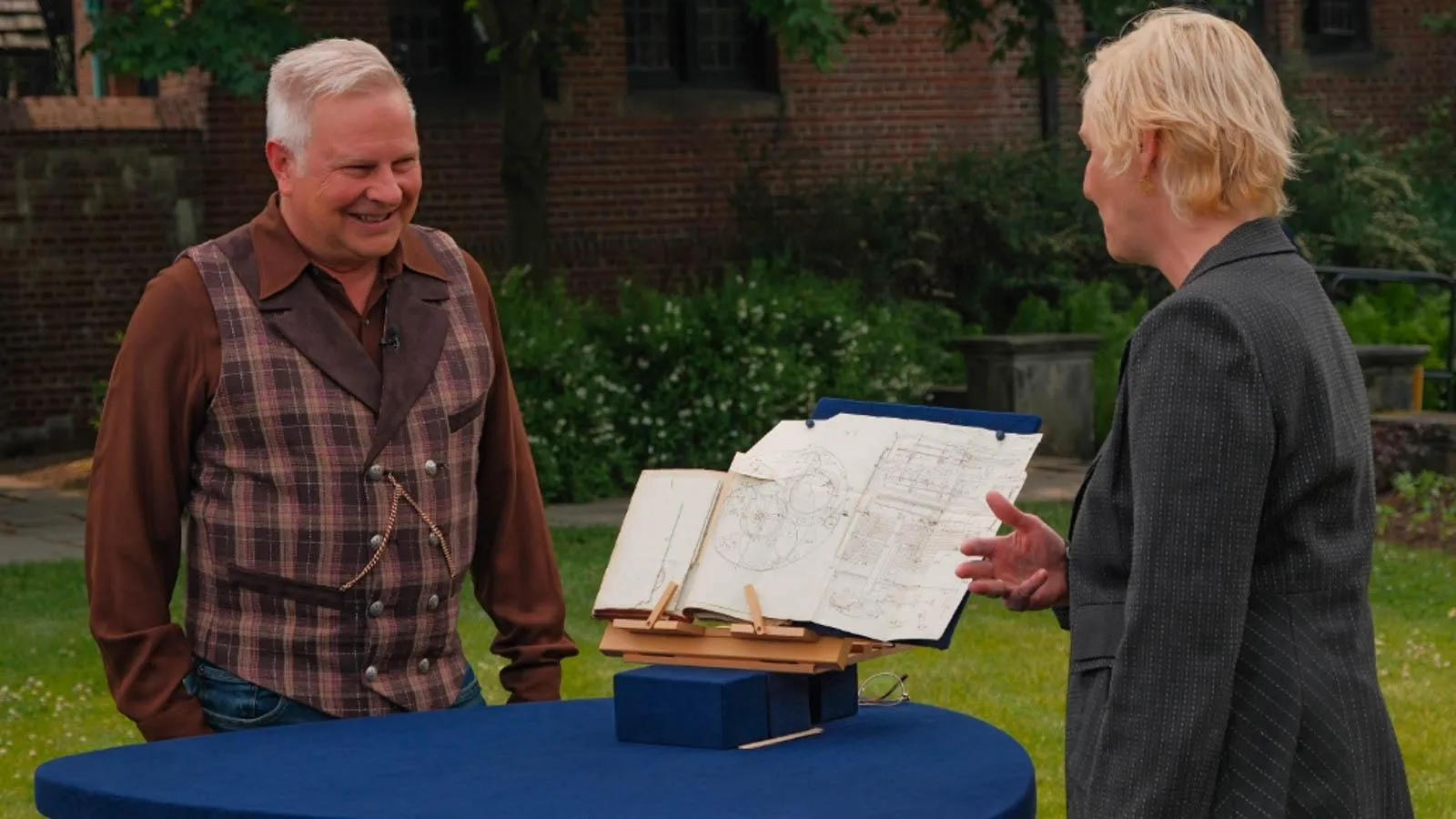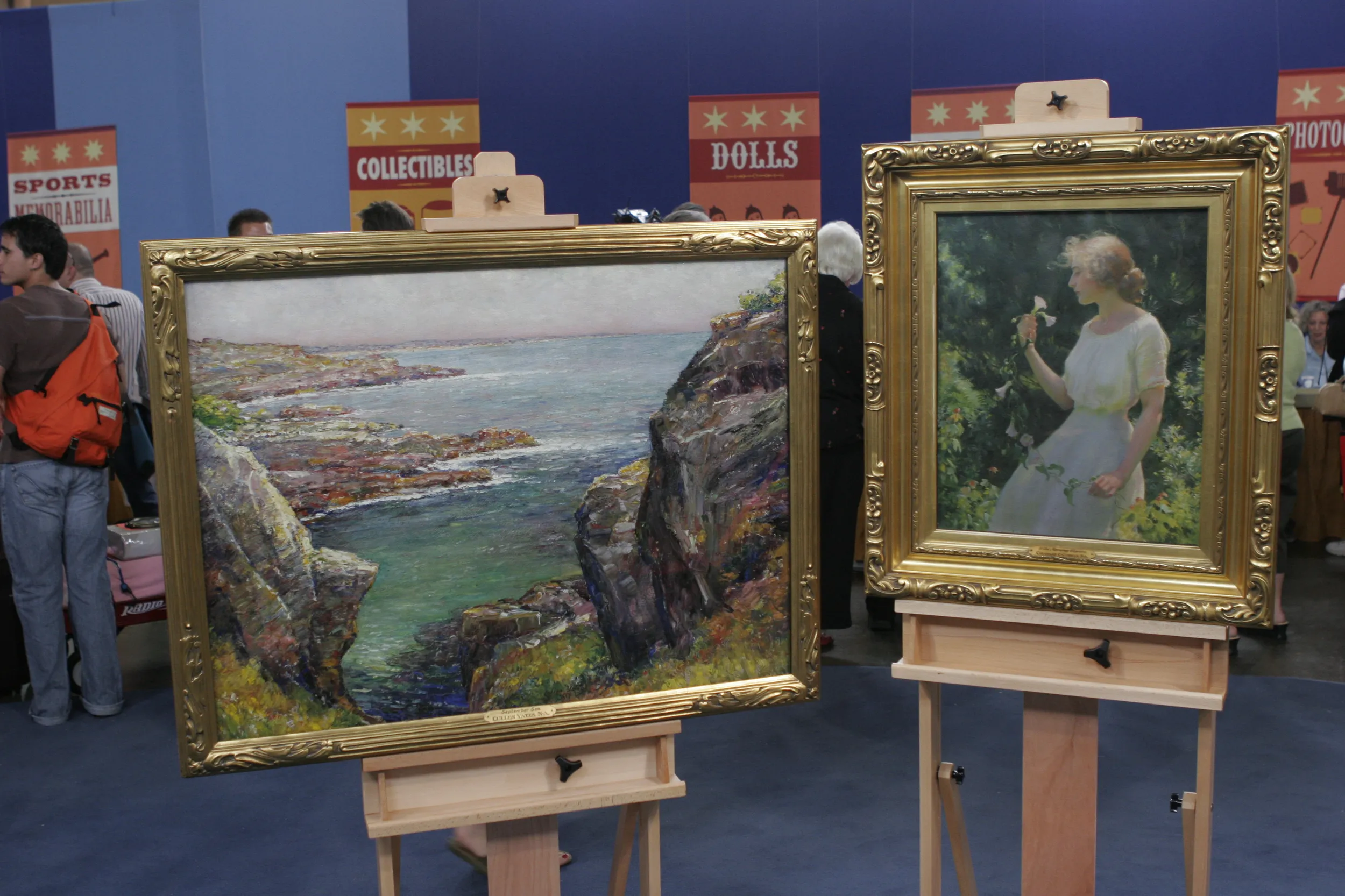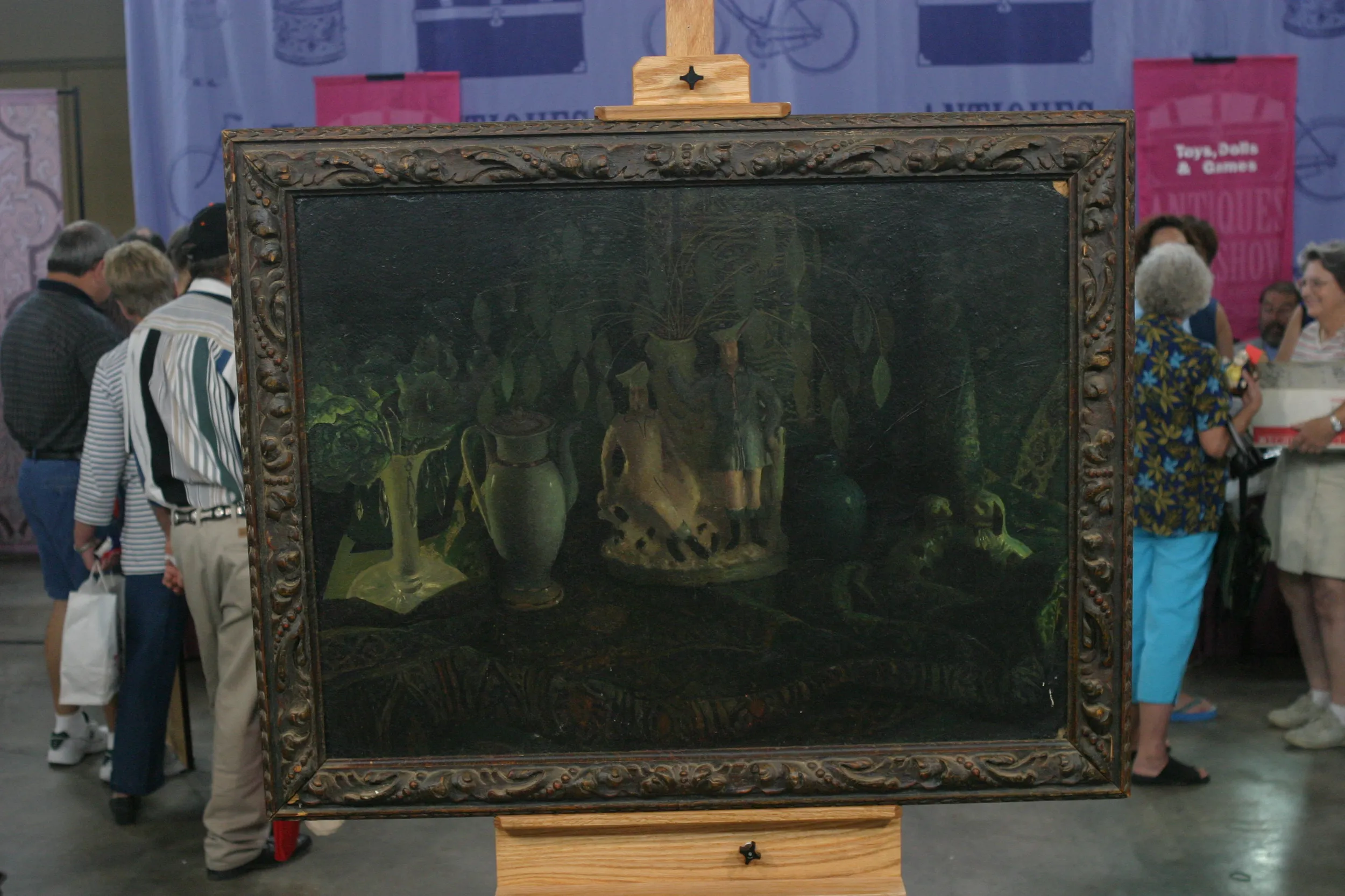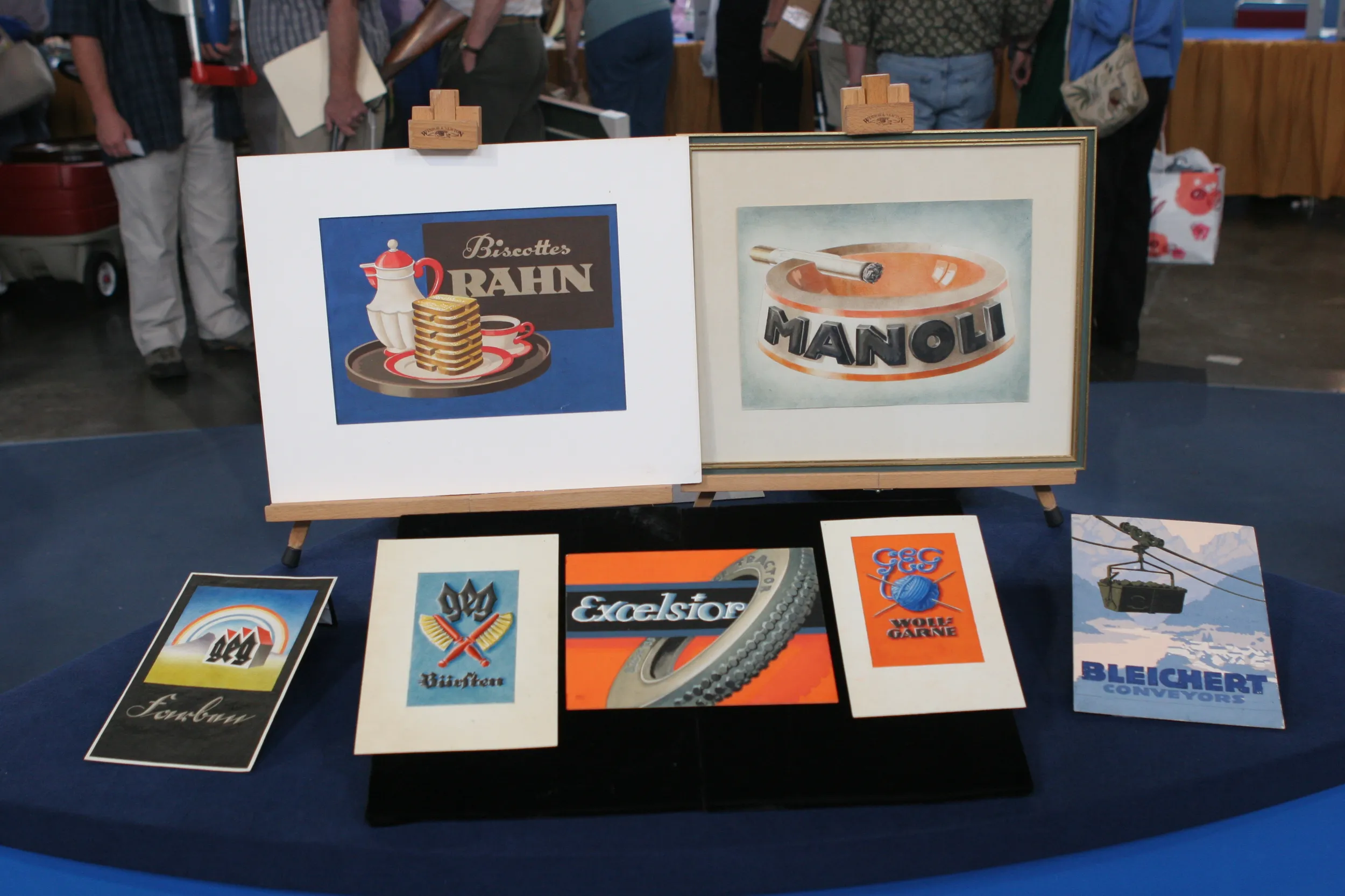GUEST: I got them through my father-in-law. My wife and I inherited them. When he was eight years old, he went to the Philippines, uh, with his family. They were mining engineers.
APPRAISER: And approximately when would that have been?
GUEST: This would have been mid '30s.
APPRAISER: Okay.
GUEST: The war came along, and all the civilians were taken into an inter... internment camp, Santo Tomas in, uh, Manila. He went into the internment camp at age 15. He and the rest of the family were there. He and his sister, mother, father. Everyone was liberated when the Americans came in. Uh, he was 19, it was on... actually on his birthday. Some of the family decided to, to go back eventually and come back to the United States. And his mother stayed on in the Philippines for a number of years. When it... she felt it was time to come back, apparently she collected
pieces that made her feel like what she saw.
APPRAISER: Sure.
GUEST: She enjoyed living there.
APPRAISER: Sure.
APPRAISER: That's my understanding. So I see both of these paintings are dated 1955.
GUEST: Right.
APPRAISER: So she would have bought them probably approximately around then, shortly after the war. And she would have still been living there
in '55. Correct?
GUEST: Right, right, and she, she came back late '50s, early '60s.
APPRAISER: What you brought are two oil paintings, oil on board.
GUEST: Right.
APPRAISER: They are by an artist named Fernando Amorsolo, a Filipino artist, a very well-known artist of the 20th century. You brought me a smaller example here, which is a genre subject that he favored, and he produced a wide number of examples with these subjects.
GUEST: Right.
APPRAISER: Everyday life. This is a laundress. While it's not titled, that subject was very popular for him.
GUEST: Right.
APPRAISER: The other and larger is a harvesting subject. So, a wonderful, uh, impressionist landscape depicting figures harvesting, probably, the
rice harvest. And this was yet another good example that he produced over and over and over. A lot of American soldiers came back with his work. That's why so many surfaced here in the States and in Europe, because they were, in some sense, treated as souvenirs to bring back. And they were a great representation of everyday life in the Philippines. Amorsolo was often referred to as "the Grand Old Man of Philippine art." He was born in 1892. He passed in 1972. For the bulk of his career, he was very prolific.
GUEST: Right.
APPRAISER: He taught at the University of the Philippines. He worked for the Bureau of Public Works. At the beginning of his career and middle part of his career, he was more highly regarded, probably, by outsiders or Europeans...
GUEST: Right.
APPRAISER: ...or Americans. More recently, especially in the last ten years, we've seen a big change in the market for his work.
GUEST: Mm-hmm.
APPRAISER: There's been this repatriation of Filipino artists and their work. And in the case of Amorsolo, he was the first sort of national painter of the Philippines. He was honored with that posthumously. Collectors consider him to have captured sort of the essence or the soul of the Philippines with his subjects.
GUEST: Hmm.
APPRAISER: Nowadays, his work is very sought after. Do you know how much she paid for the works?
GUEST: I have not a clue.
APPRAISER: How many paintings did she collect?
GUEST: I think at least ten pieces.
APPRAISER: Were they distributed among family members or just... did they... most of them pass to you?
GUEST: Most of them passed to us.
APPRAISER: Okay. For both of the paintings together, I would suggest a conservative auction estimate of $120,000 to $180,000.
GUEST : Hmm. That's a bit more than I was expecting. (chuckles)
APPRAISER: The smaller example, I would estimate in the range of $40,000 to $60,000.
GUEST: I am very surprised. (chuckles)
APPRAISER: The larger harvest scene, I would put an auction estimate of $80,000 to $120,000.
GUEST : Okay.











